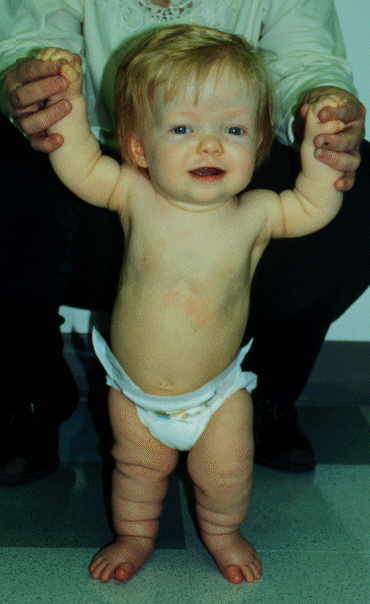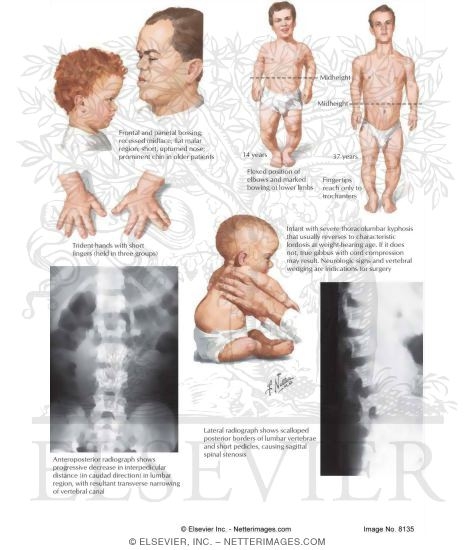Achondroplasia
Achondroplasia (also called chondrodysplasia or Chondrodystrophia fetalis ) is in many mammals - including humans - frequent mutation which affects the growth of the skeletal system. It is inherited as an autosomal dominant in lower part (about 20 %), to a far greater part arises but by new mutation, where the probability of occurrence increases with age, particularly the biological father. The life expectancy and intelligence are not affected.
Frequency
Achondroplasia is the most common form of genetic dwarfism. It occurs with an incidence of 1 in 20,000 births.
Cause
Achondroplasia is the result of a point mutation in the fibroblast growth factor receptor gene FGFR- 3 (English: fibroblast growth factor receptor 3 ). This mutation results in an autosomal dominant disorder of cartilage formation; the bone growth plate ( physis ) is ossified prematurely, resulting in the restriction of longitudinal growth, especially of the arms and legs ( extremities) leads ( endochondral ossification ).
Approximately 80% of cases are caused by new mutations. The reason lies in 96 % of cases, a G (1138) A point mutation in the FGFR -3 gene is present. This results in an amino acid substitution at position 380 of the protein ( glycine to arginine). In 3% of cases can be a G (1138) demonstrate C point mutation, which has a glycine to glutamine exchange result. Embryos with homozygous mutation (both the paternal and the maternal variant of the gene are changed ) are not viable and die in the womb ( in utero ).
General symptoms of mutation
Achondroplasia leads to a disproportionated dwarfism. Since the unusual formation of cartilage in the long bones at a regular development can not be possible, in particular, greatly shortened extremities are characteristic. Linear growth is disrupted in contrast, almost normal growth in thickness.
Other symptoms in people affected are:
- Comparatively short fingers
- Increased distance between the 3rd and 4th fingers ( trident hand)
- Comparatively short neck and large head with a bulging forehead and unusual skull base
- Thin face with saddle nose
- Often hollow cross ( lordosis) or kyphosis
- Congenital obstruction of the entire spinal canal
- Often bow legs or knock knees
- Frequent middle ear infections (due to Eustachian tube constricted )
- Characteristic skin folds ( the skin is too far for the shortened limbs)
- Hydrocephalus
Due to their relatively long hull of achondroplasia people affected have a near normal seat height. Full grown they reach a height 120-148 cm.
Therapy
The therapy is based on the symptoms. In functional disabilities through the leg axis and spine position and at the onset of paralysis decompress and stabilizing spinal interventions can be made. Operative leg extensions with length gain up to 20 cm are possible.










